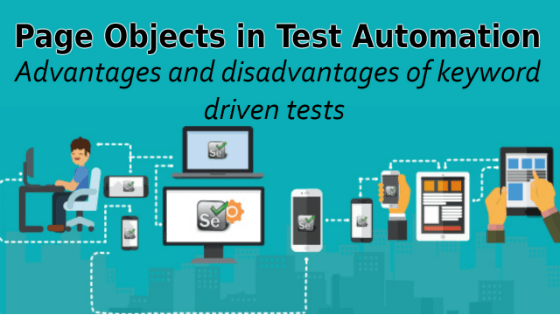What will you learn in this course?
Are you struggling with working with HTML using Selenium WebDriver? Do you know how to easily identify and manipulate an element using Selenium WebDriver? How about performing a drag n’ drop on an element? If not, then these are just a few of the questions that will be answered in this course.
This course is a complete guide on working with web elements in Selenium WebDriver! Once you are finished with this course, you will know how to work with any web elements, anytime, on any web application.
In this course from Ultimate QA, you will learn:
– Basics of HTML
– All the different locator strategies for Selenium WebDriver
– How to identify web elements using Selenium WebDriver
– Master XPath
– Navigation with Selenium WebDriver
– Web element manipulation
– Web element interrogation
– Mouse and keyboard actions with Selenium WebDriver
– Performing actions such as drag n’ drop, drawing, hovering
– Implicit and Explicit waits
– How to properly handle element identification so that your tests are not flaky
– Expected Conditions in Selenium WebDriver
Take This Entire Course for Free
[Tweet “Free #Selenium Course Reveals Page Objects in Test Automation”]
What will you learn in this lecture?
In the previous video, we learned about finally getting the recorded test to run of the page objects in test automation course. In this video, we will go through the advantages and disadvantages of keyword driven tests of the course.
Advantages and disadvantages of keyword driven tests
So I quickly want to just wrap up with you guys just to drive all the points home regarding the advantages and disadvantages of the keyword driven framework. Just to kind of tied all together and keywords your framework. It is a fantastic way to start writing automated functional tests. It is way better than recording replay because of the utilization of methods right.
Methods are just one of the great programming concepts that allow us to encapsulate reusable code into a single place and then utilize the method so that whenever we make a change in a single place now that change is going to be reflected in all of the places where that method is used. And that’s fantastic obviously making our code more reusable code more is more reusable. We spend a lot less time on maintenance and when we spend a lot less time on maintenance that makes our code more resilient to changes that we know are coming. 100 percent of the time.
Sadly the keywords or even the framework is not the best approach to writing automated functional tests and there are better approaches to doing this. And it does some some disadvantages. One thing that you might envision in the future is as we continue to write our tests we’re going to start having a bunch of methods we’re going to start having methods for clicking the log in button and clicking a log in link typing in user username typing in password typing in the sign in button going to a page.
All of these methods are going to quickly add up and you’re going to start to have so many methods in one file that is going to start becoming hard to keep track of what each method is doing even if you’re naming conventions are good. And that becomes a problem because you start having methods to every action and then it just becomes an overall mess. And of course the other disadvantage Schicchi were driven frameworks is that any kind of flow changes are going to still break all of the tests.
Whenever you have methods change to gather anything that comes in between those methods that may be required whether a requirement change or a functionality update or some kind of degradation in the performance of the application. All of those flow changes that are going to require and use method added in between they’re going to cause a breakage in all of your tests.
[Tweet “Free #Selenium Course Reveals Page Objects in Test Automation”]
